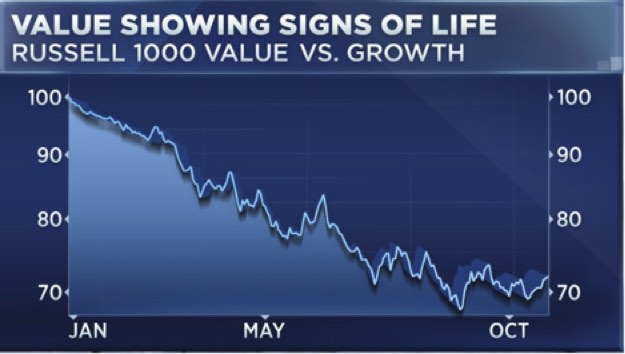Keep connected
Our investment management team is made up of engaged thought leaders. Get their latest commentary and stay informed of their frequent media interviews, all delivered to your inbox.
John Zechner
November 2, 2020
For most of the past six months stocks have defied the expectations and predictions of strategists and investors, following their collapse in the first quarter of this year. Despite the Covid-19 virus being impact being much worse than almost anyone would’ve imagined (not many predictions that global cases would be rising at a record level of over 400 thousand per day nine months into the pandemic), stocks fought their way to back to their old highs in the U.S., driven by a massive rise in the valuations of all the ‘stay at home’ beneficiaries. This was supplemented by record levels of liquidity provided by central banks and fiscal spending by most governments that sent global debt levels soaring and perhaps some excessive speculative activity from ‘sports-starved’ investors, flush with new stimulus cheques and a little too much excess time. In fact, trading in speculative stocks with low share prices has surged this year, fueled by a huge influx of individuals using zero-commission investing apps and online brokerages. During this spring and summer, more than 25% of the shares traded in the U.S. stock market were in companies with a share price below $5, versus the period from 2012 to 2019, when that percentage mostly hovered between 10% and 15%.
But all of that is now in the rear-view mirror and investors need to figure out what lies ahead. Investors appeared to run out of enthusiasm recently though, as stocks finished October with their worst week since the March lows. The pundits have been pointing out the renewed focus on multiple market risks, including the upcoming U.S. elections (and the very real possibility that we don’t have a decision that night), a growing ‘second wave’ of Covid-19 cases across the globe and the inability of the U.S. congress to come to a new ‘stimulus package’ as the current programs have run off. The sell-off in the last week of October really seemed like a ‘cathartic selling panic.’ The selling was broad and ‘across the board’ in terms of sectors, from deep value stocks to safe dividend plays to extended high growth names. Commodities, particularly precious metals, also got pummelled and the U.S. dollar once again took over as the ‘safe haven’ for investors in times of maximum risk. What we found most interesting about the past week was that bonds did not rally like they have done in prior stock market sell-offs, suggesting that the stock market weakness was more a case of ‘overbought’ stocks and excessive optimism being unwound as opposed to new, real fears about the economic outlook or the need for more monetary support.
We are relatively sanguine about the outlook for stocks for the balance of this year and next. Risk exists at all times when investing in stocks, but the worst outcomes generally come from the ‘unknown risks’, such as the sudden shutdown of the global economy in March or the sharp rise in interest rates which damaged stocks in the fourth quarter of 2018. Right now, we feel that most of the risks facing investors are ‘known risks.’ For instance, as bad as the pandemic has gotten in this ‘second wave’, there seems very little likelihood that economies will be shutting down again anywhere close to the degree we saw in March-June. Also, despite the U.S. elections on November 4th, there seems to be a growing belief that, whatever the outcome, there will be another round of major stimulus spending by the party in power. The unknowns are mostly to the upside, including the possibility of a vaccine which would hasten the move back to ‘somewhat more normal’ economic conditions. The bottom line is that the three key uncertainties the market is dealing with will most likely be resolved in 2021.
In terms of stock market strategy, we continue to see better risk/reward trade-offs in the economically sensitive stock groups such as financials, industrials, basic materials and even energy. Valuations remain attractive in those sectors, the potential for an earnings rebound is strong and many of stocks in those groups carry substantial dividend yields, meaning that even if the stocks don’t rise, investors will still earn a decent rate of return while they wait for a recovery. We think the risks are higher in the high growth sectors of the market, where valuations are extended, expectations for further growth remain high. Moreover, this group would be damaged the most if economic growth recovers and interest rates firm up further.
Value investing is suffering its worst run on record after the pandemic compounded a decade of struggles for a popular strategy that consists of buying cheap stocks in often unfashionable industries. The approach of favouring bargains, typically judged by comparing a company’s share price to the value of its assets, over faster-expanding but expensive growth stocks has a long history. Economists have shown that modestly priced stocks have in the long run returned significantly more than the broader equity market. But value stocks have performed dismally since the 2008-09 financial crisis and this year the drought has worsened dramatically, making the degree of underperformance relative to racier growth stocks even more extreme than at the peak of the dotcom bubble as interest rates plunged to all-time lows and economic activity was subdued compared to prior expansions. But we believe we are starting to see a shift back into the ‘value’ sectors following the Nasdaq market peak in early September. Financials, Industrials and small caps stocks were lower in the October sell-off, but the losses were much more muted compared to the prior ‘high flying’ techs.
1 2
Our investment management team is made up of engaged thought leaders. Get their latest commentary and stay informed of their frequent media interviews, all delivered to your inbox.